Tags
Duchess Alexandrine of Mecklenburg-Schwerin, Duchess Cecilie of Mecklenburg-Schwerin, Emperor Nicholas I of Russia, Frederick-Francis III of Mecklenburg-Schwerin, Grand Duchess, Grand Duchess Anastasia Mikhailovna of Russia, King Christian IX of Denmark, King Christian X of Denmark, King Frederik IX of Denmark, King Frederik VIII of Denmark, Knud of Denmark, Queen Margrethe II of Denmark.
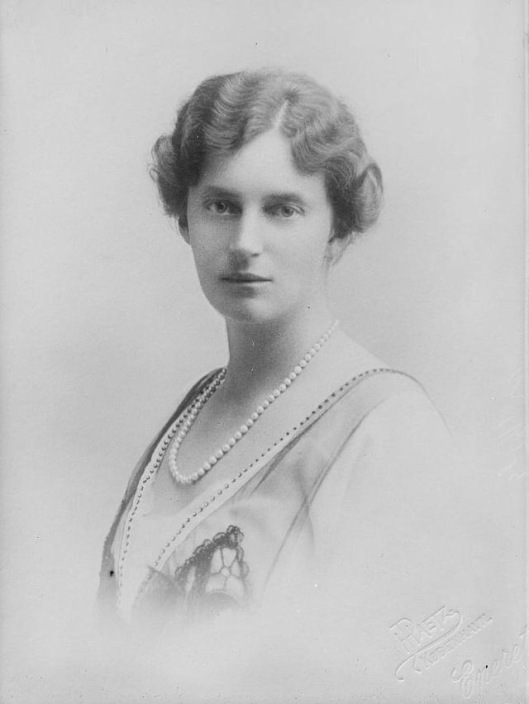
Duchess Alexandrine of Mecklenburg-Schwerin (December 24, 1879 –December 28, 1952) was Queen of Denmark as the spouse of King Christian X. She was also Queen of Iceland (where the name was officially Alexandría) from December 1, 1918 to June 17, 1944.

Duchess Alexandrine of Mecklenburg-Schwerin
Family
Alexandrine was born a Duchess of Mecklenburg-Schwerin, in the city of Schwerin, Germany. Her father was Friedrich-Franz III, Grand Duke of Mecklenburg-Schwerin; her mother was Grand Duchess Anastasia Mikhailovna of Russia, the second of the seven children of Grand Duke Michael Nicolaievich of Russia and his wife, Grand Duchess Olga Feodorovna (born Princess Cecilie of Baden). Alexandrine was also a granddaughter of Emperor Nicholas I of Russia
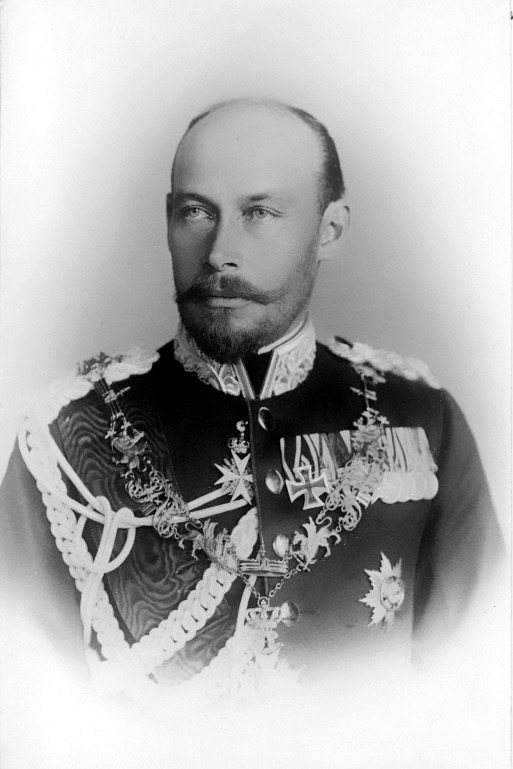
Duchess Alexandrine’s father, Friedrich-Franz III, Grand Duke of Mecklenburg-Schwerin.
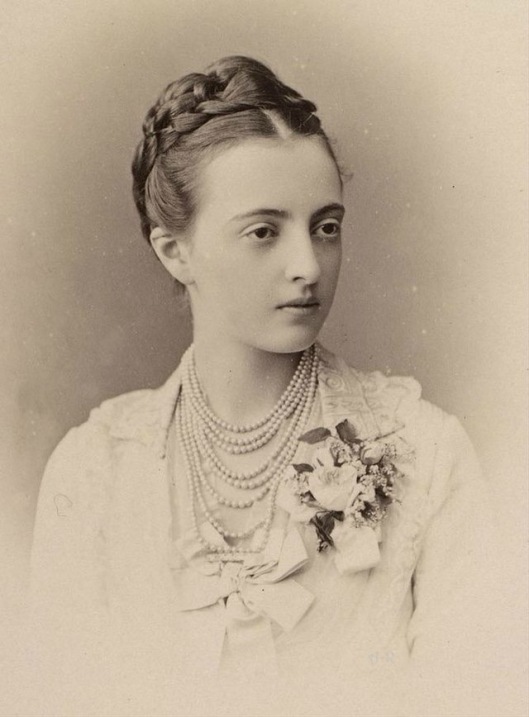
Duchess Alexandrine’s mother, Grand Duchess Anastasia Mikhailovna of Russia
She was a paternal first cousin of Princess Irina Alexandrovna of Russia, the wife of Felix Yusupov, one of the murderers of Rasputin.
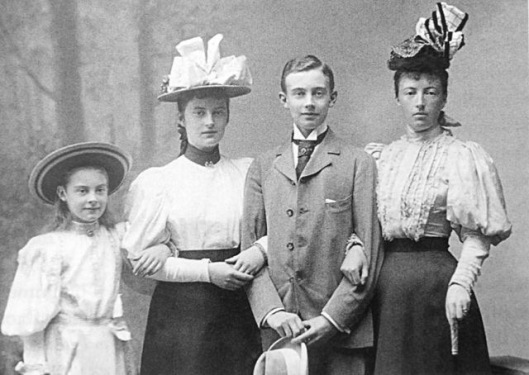
Cecilie, Alexandrine and Friedrich-Franz of Mecklenburg-Schwerin with their mother Grand Duchess Anastasia.
Alexandrine’s only brother was Friedrich-Franz IV, Grand Duke of Mecklenburg-Schwerin (1882-1945), while her only sister was Duchess Cecilie of Mecklenburg-Schwerin (1886-1954) wife of German Crown Prince Wilhelm, eldest son of German Emperor Wilhelm II.
Marriage and issue
Duchess Alexandrine married Prince Christian of Denmark on April 26, 1898, in Cannes, France, when she was 18 years old. They had two children:
* Prince Frederik (1899–1972), later King Frederik IX of Denmark; married Princess Ingrid of Sweden.
* Prince Knud (1900–1976), later Knud, Hereditary Prince of Denmark; married Princess Caroline-Mathilde of Denmark.
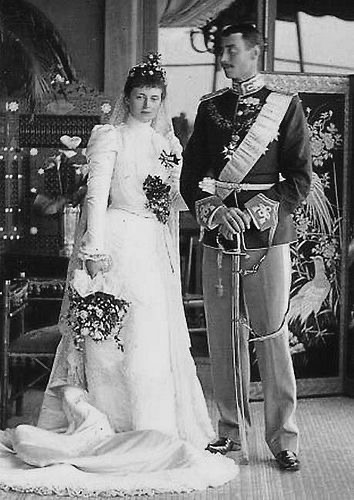
In 1902, the couple were given Marselisborg Palace, and the garden was to become one of her greatest interests. Alexandrine became crown princess in 1906 with the death of King Christian IX of Denmark and in 1912 she became Queen Consort of Denmark upon the death of King Frederik VIII and the accession of Alexandrine’s husband as King Christian X. As Queen, Alexandrine is not considered to have played any political role, but is described as being a loyal support to her spouse.
She was interested in music, and acted as the protector of the musical societies Musikforeningen i København and Den danske Richard Wagnerforening. She was known for her needlework, which she sold for charitable purposes. After the death of her mother-in-law, Louise of Sweden in 1926, she succeeded her as the official protector of the various charity organisations founded by Louise. She enjoyed golf and photography. During World War I, she founded Dronningens Centralkomité af 1914 (“The Queen’s Central Committee of 1914”) to the support of poor families. She survived the 1918 flu pandemic.

Prince Christian and Princess Alexandrine of Denmark with their eldest son Prince Frederik.
The couple was given great popularity as national symbols during the World War II occupation, which was demonstrated during a tour through the country in 1946. Before the occupation, she and her daughter-in-law were engaged in mobilising the Danish women. Her rejection of General Kaupisch on April 9, 1940 became a symbol for her loyalty toward Denmark before her birth country Germany.
When the General of the occupation forces first asked for an audience with the monarch, Christian was persuaded to receive him by his daughter-in-law as he would any other, which was supported by Alexandrine. He asked to do so alone, but Alexandrine told him she would interrupt them. When the General was about to leave, she came in; and when he greeted her, she said: “General, this is not the circumstance in which I expected to greet a countryman.”

It was reported, that although Alexandrine was seen as shy and disliked official ceremonies, she had a “sharp” intelligence, and she was, together with her daughter-in-law, Ingrid of Sweden, a true support of the monarch and a driving force for the resistance toward the occupation within the royal house.
It was also reported, that in contrast to the monarch himself and the Crown Prince, the Queen and the Crown Princess never lost their calm when the nation was attacked. As she was not the Head of the Royal House, she could show herself in public more than her spouse, who did not wish to show support to the occupation by being seen in public, and she used this to engage in various organisations for social relief to ease the difficulties caused by the occupation. Kaj Munk is quoted to describe the public appreciation of her during World War II with his comment: “Protect our Queen, the only German we would like to keep!”
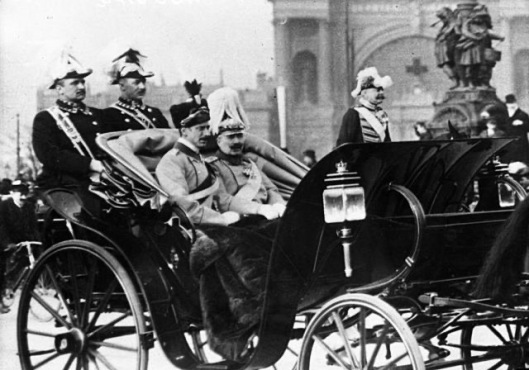
King Christian X of Denmark with Emperor Wilhelm II of Germany
In 1947, she was widowed; on his death in Amalienborg Palace, Copenhagen, in 1947, Christian X was interred along other members of the Danish royal family in Roskilde Cathedral near Copenhagen. Their son succeeded as King Frederik IX of Denmark. Queen Alexandrine became the first queen dowager of Denmark to opt not to use that title. Instead she was known as Her Majesty Queen Alexandrine of Denmark. She was the paternal grandmother of the current reigning Queen of Denmark, Margrethe II.

Queen Alexandrine died in Copenhagen on December 28, 1952 and is interred next to her husband in Roskilde Cathedral.
